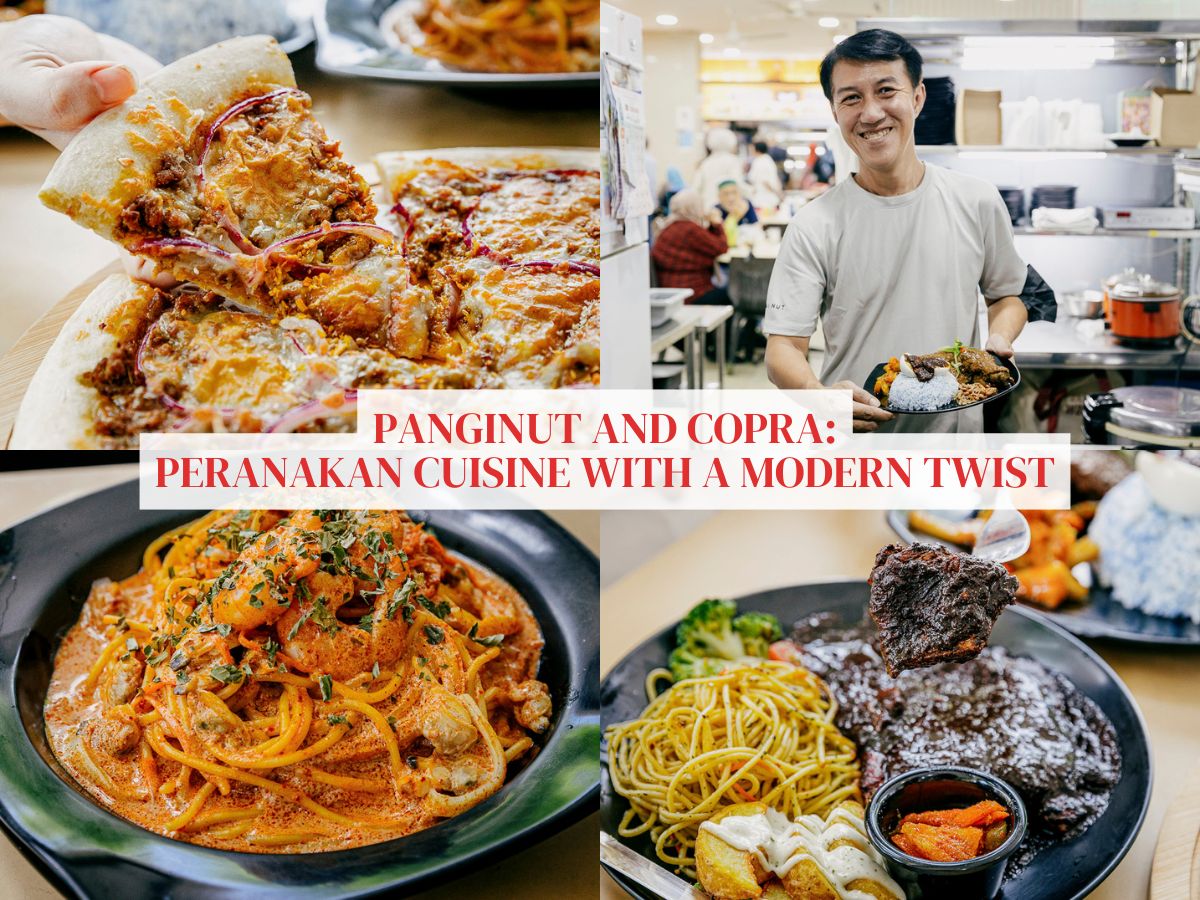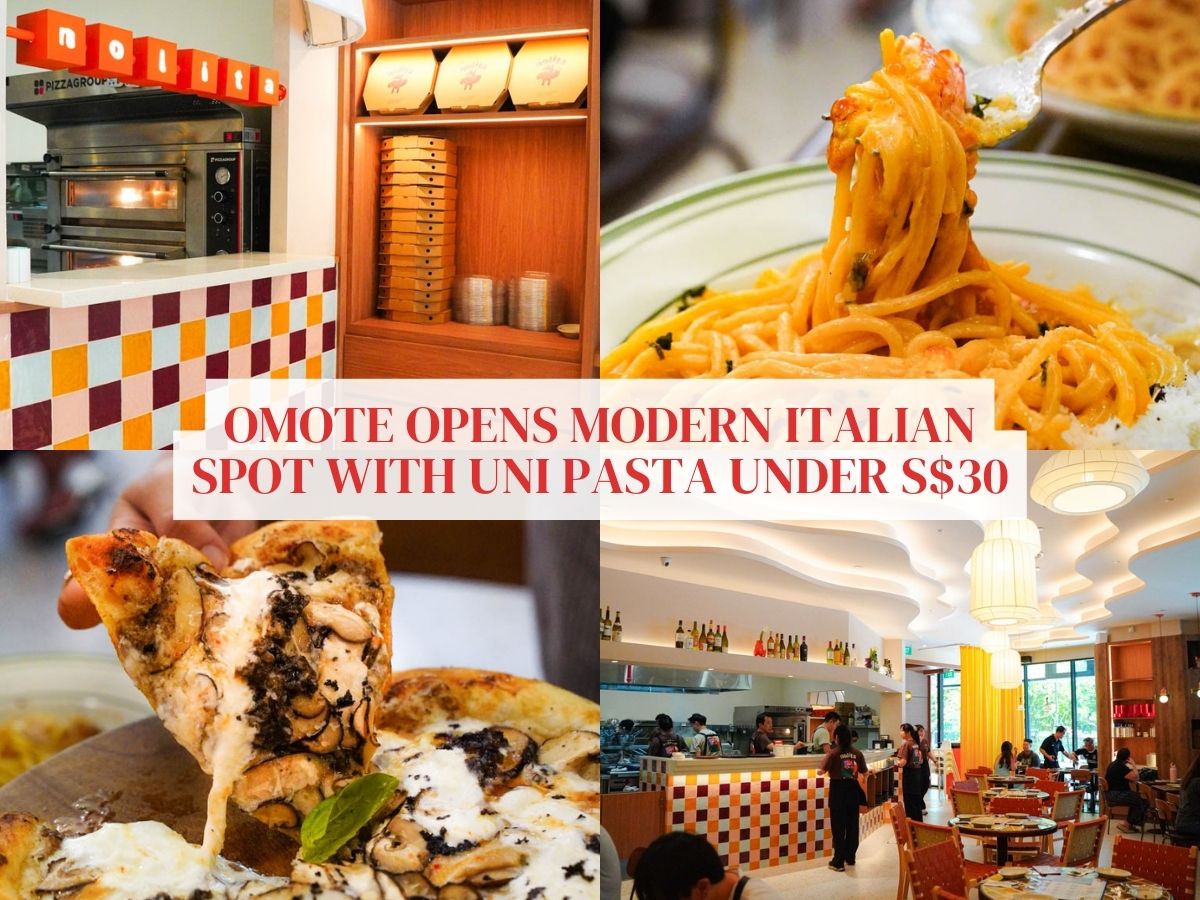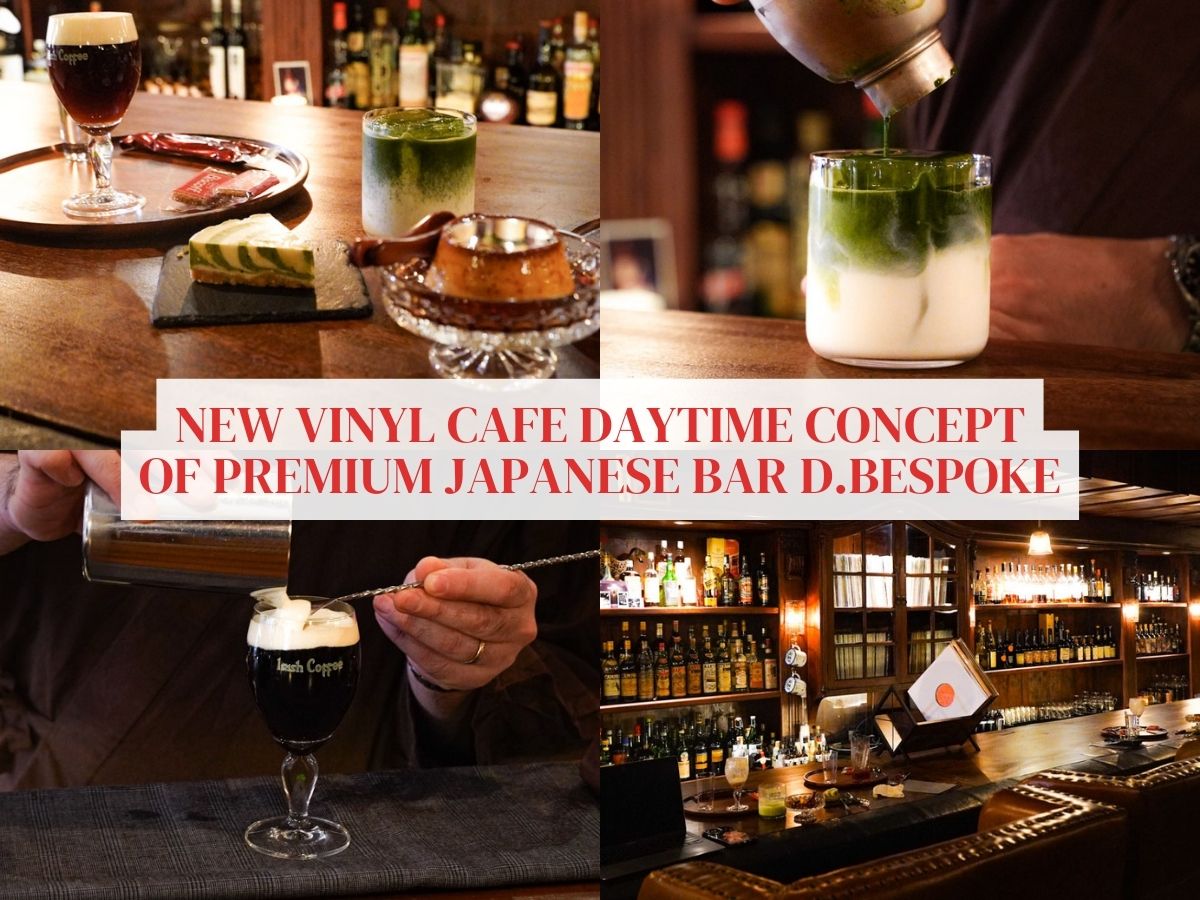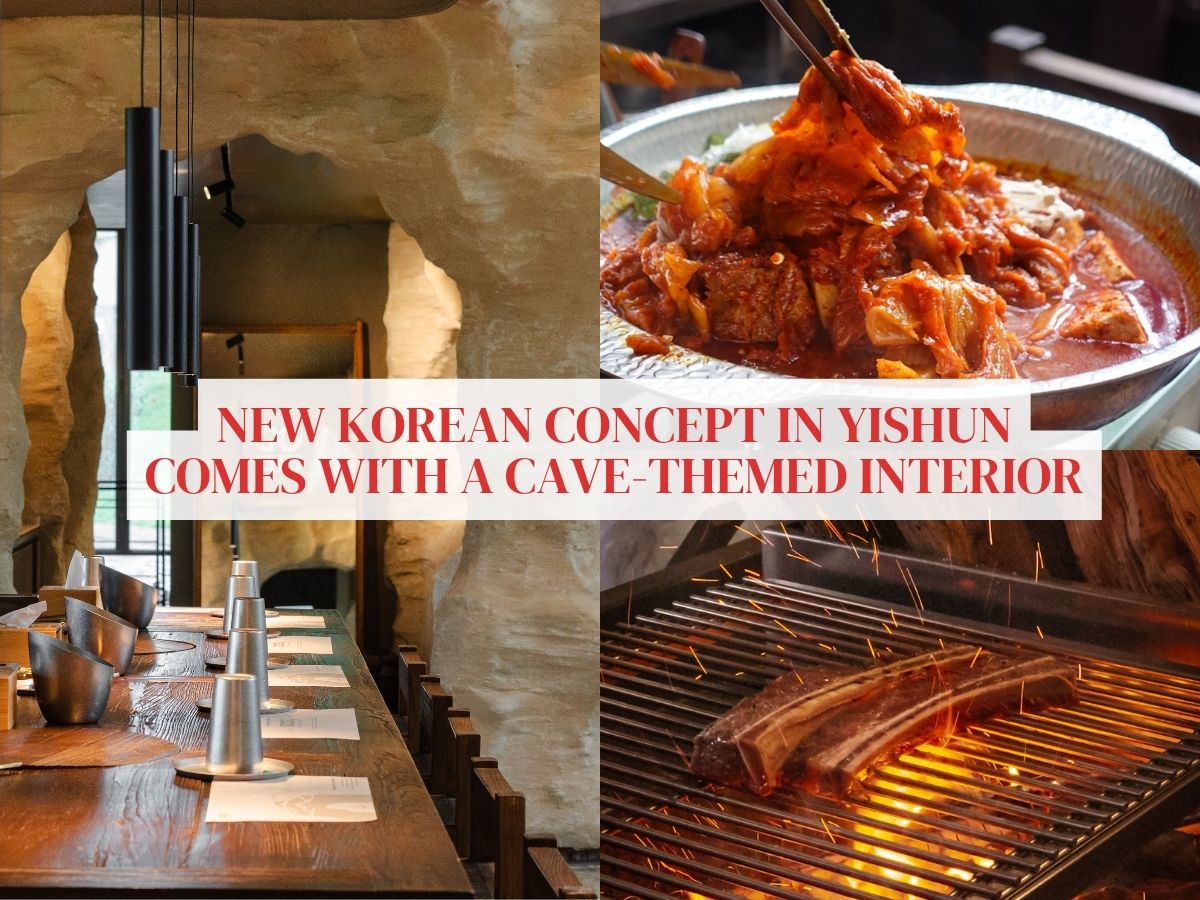Panginut and Copra: A modern love letter to hawker Jarrod Poh’s Perenakan heritage
- Jarrod Poh, a third-generation Peranakan started Panginut to showcase Peranakan cuisine, with recipes inspired by his grandmother’s cookbooks.
- With an extensive Peranakan-western fusion menu to cater to younger diners, some of his signature dishes include buah keluak chicken chop and beef rendang pizza.
- Launched in October this year, new sister stall Copra is Jarrod’s take on Peranakan-style nasi lemak, with blue pea flowers infused into nasi lemak rice.
Growing up in a third-generation Peranakan household, hawker Jarrod Poh, 53, firmly believes in championing his rich heritage and food culture.
Jarrod describes his food as “Peranakan-influenced” western and his hawker stall Panginut, which reopened in September at Joo Chiat Complex, is an ode to that.
Diners will find an extensive array of dishes such as buah keluak chicken chop, beef rendang pizza, rendang beef burger, and seafood laksa pizza.
This east-west fusion is Jarrod’s way of introducing Peranakan cuisine to a younger generation, and keeping the food flavours he grew up with alive — albeit with some re-invention.
In October this year, Jarrod also launched Copra. The sister stall features Peranakan-influenced nasi lemak, with blue pea nasi lemak rice sets as the main attraction.
Jarrod’s road to starting Panginut
Being born into a Singaporean Peranakan household, Jarrod and his brothers grew up eating Peranakan food on a daily basis.
“I was always drawn to the kitchen once I smelt the frying of aromatic spices and would watch my mother and grandmother cook,” he recalls, fondly. “They would even cook for extended family gatherings of more than 100 people during Chinese New Year and other special occasions.”
He started showing an interest in cooking at a young age and eventually graduated from culinary school at Shatec in 1987. After which, Jarrod slowly worked his way up to head chef and executive chef for corporates such as Pentagon Group and Tribe at The Arts House, and also took up chef consultancy work for new restaurants.
After 35 years, Jarrod decided to hang up his corporate chef hat in December 2022 and switched it for a hawker’s wok.
He started hawker stall Panginut as he wanted to give Peranakan cuisine more exposure — especially amongst a younger demographic.
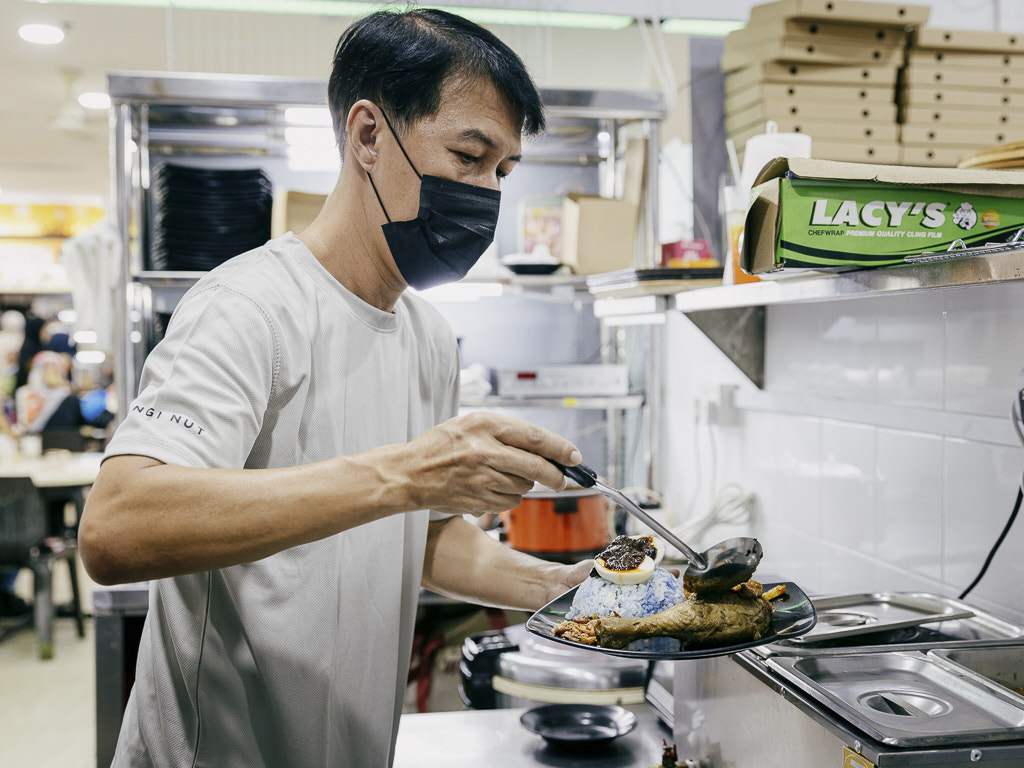
“I worked in themed catering, where the client would request Peranakan-themed cooking and I realised not many young adults knew much about Straits culture,” he recalls. “Unlike places such as Penang or Malacca, Peranakan heritage is not as prominent in Singapore — it’s limited to neighbourhood enclaves such as Katong or Joo Chiat.”
Jarrod also notes that Peranakan food is mostly the domain of restaurants, which isn’t all that accessible for everyday dining.
He observes that while many places strive to keep their food authentic, certain Peranakan dishes such as buah keluak are an acquired taste and this makes it difficult for restaurants to sustain business in the long run.
“I had to make sure that my stall would entice the younger generation and still preserve the authenticity of the food, while keeping prices affordable,” says Jarrod.
A journey in experimentation
To ensure the authenticity of his dishes, Jarrod began digging through old family recipe books belonging to his mother and grandmother.
However, replicating recipes proved to be a challenge as many came with drawings and incomprehensible measurements.
“My grandmother was illiterate, so she would give vague measurements like ‘two cents’ of coconut ,‘one thumb’ of ginger or ‘one handful’ of a certain item,” says Jarrod. “But that’s hard to interpret as her hand was small, but mine is so thick!”
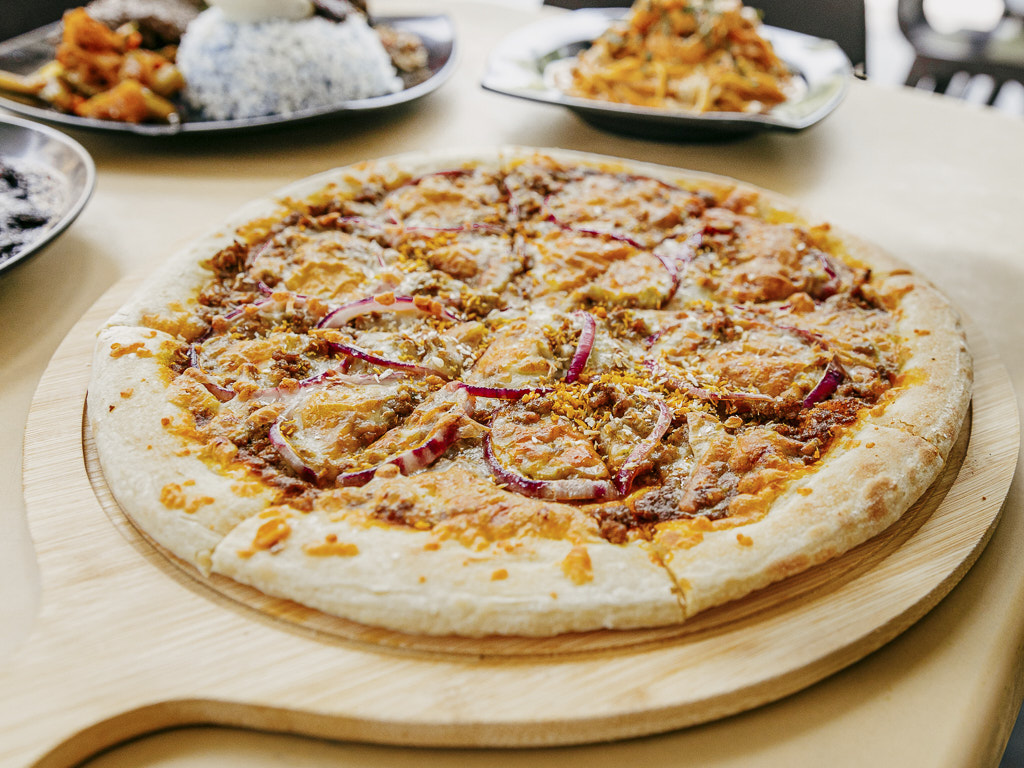
Without a standardised way of measuring ingredients, Jarrod had to rely on recollection and experimentation to ensure the flavours and taste of his food resembled how his grandmother cooked them.
He also invited relatives over to give feedback on dishes such as beef rendang and ayam buah keluak, as he slowly perfected his recipes.
Once his R&D was complete, Jarrod decided on a fusion approach to his menu. The western-style menu paired with nyonya food items is meant to attract younger diners. You’ll find familiar food categories such as chicken chop, burgers, pasta, steak, and pizza, but with Peranakan pairings — pong teh, rendang, buah keluak and the like.
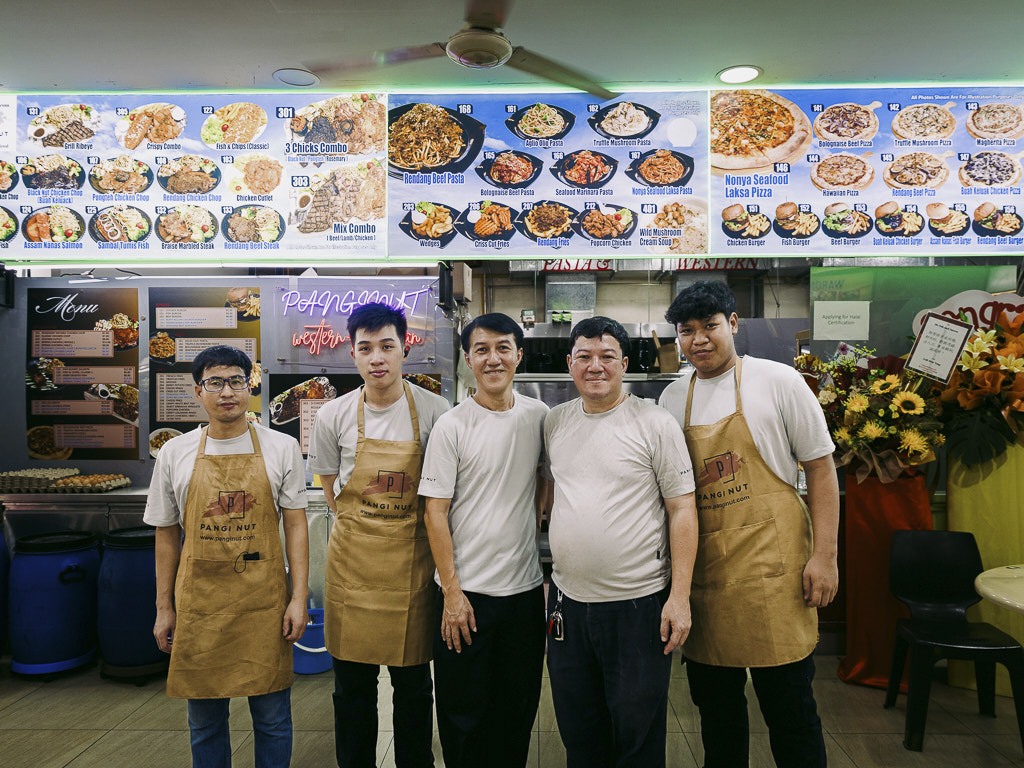
Since opening his stall, Jarrod is happy to have attracted a customer base of young adult patrons.
“They’ll come up to me and ask what buah keluak chicken pizza is and I will explain the origins and cooking technique of the dish,” he says. “It’s how I get them accustomed to Perankan-influenced cuisine.”
Challenges
Whilst Jarrod has managed to acquire a base of loyal customers since Panginut’s inception, keeping his hawker dream alive has not been without challenges.
Having first opened at Ang Mo Kio’s Thye Guan Eating House in December 2022, Jarrod struggled to sustain his business, due to poor footfall and sales. The location was deep inside Ang Mo Kio, with the nearest bus stop or MRT station being a long walk out.
It wasn’t until six months into operations that Panginut started getting noticed by customers. Jarrod hung on until June this year, but decided to move to a better location once the stall’s tenancy expired.
After a three-month hiatus, Panginut returned in September — now in a more accessible location at Joo Chiat Complex’s Chew N Chat food court.
In order to have more control over his food operations, Jarrod also manages the entire food court, which includes ownership of the drinks stall. Other stalls at Chew N Chat include Teratai (serving dishes such as yong tau foo and tahu goreng), new kunafe stall Jay & Twins Kunafa and Warung Sri Indonesia offering mee bakso and ayam penyet.
Panginut itself takes up two units as more space is required for R&D and the training of staff.
Thankfully, business has picked up in the new location, with many former customers returning to the stall, alongside new diners discovering Jarrod’s food.
Panginut and Copra’s food
On our visit to Panginut, we tried some of its specialities, such as buah keluak chicken chop (S$8.80).
This dish definitely takes time and effort to prepare — the buah keluak nuts are soaked in water for two to three days, with the water changed daily.

On the third day, the nuts are cracked and tasted, with bitter ones of poor quality tossed out. The meat from the nuts are then dug out and set aside to be cooked into the gravy.
The gravy also incorporates other ingredients such as blue ginger, turmeric and shallots — these are added, mixed and blended according to Jarrod’s recipes.

I agree with Jarrod that buah keluak’s slightly bitter, smoky and earthy taste is an acquired one. But it’s a taste that I appreciate. His rendition is evenly tempered and pairs well with the tender chicken chop. I also liked that the dish came with a generous amount of spaghetti and vegetables such as broccoli, too.
For diners who aren’t accustomed to buah keluak’s unique taste, the nyonya seafood laksa pasta (S$9.80) might be more appealing.
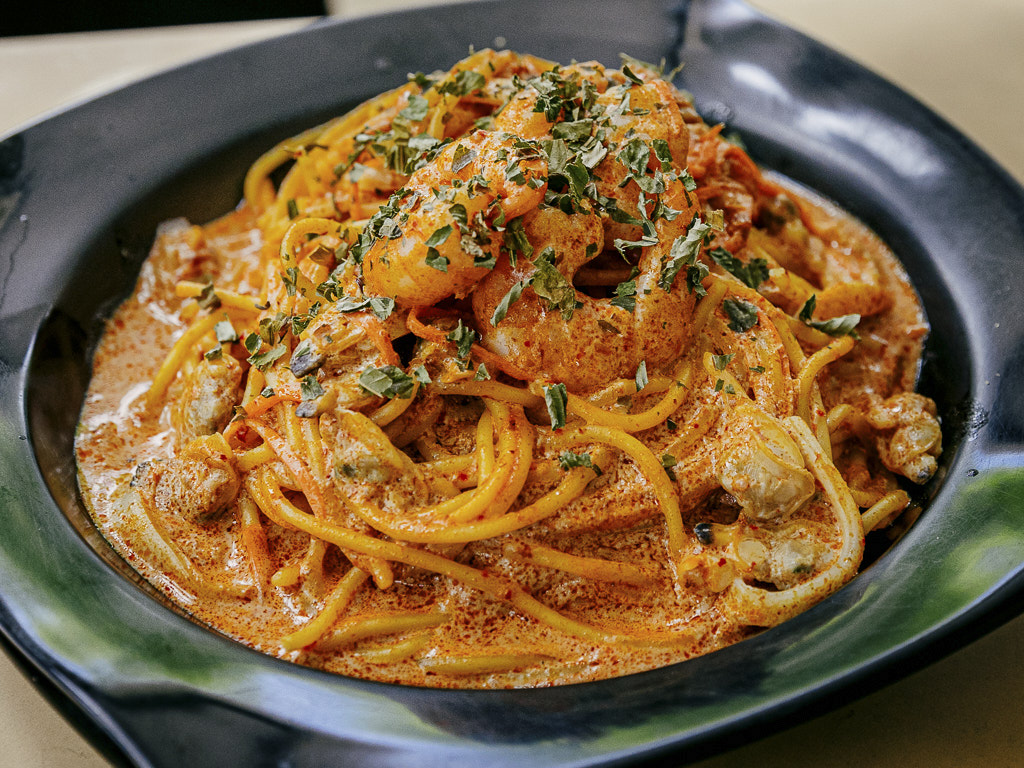
Jarrod says that his housemade rempah (laksa paste) contains 13 different kinds of ingredients and spices, including small shrimp, candlenut, blue ginger, lemongrass, yellow ginger and chilli paste.
This was a standout, especially with its thick and creamy laksa sauce and fresh prawns and mussels.
Another unique item is the rendang beef pizza (S$16). The dough is baked fresh at the stall, while the housemade beef rendang paste comprises around 10 different ingredients such as blue ginger, old ginger and coriander powder.
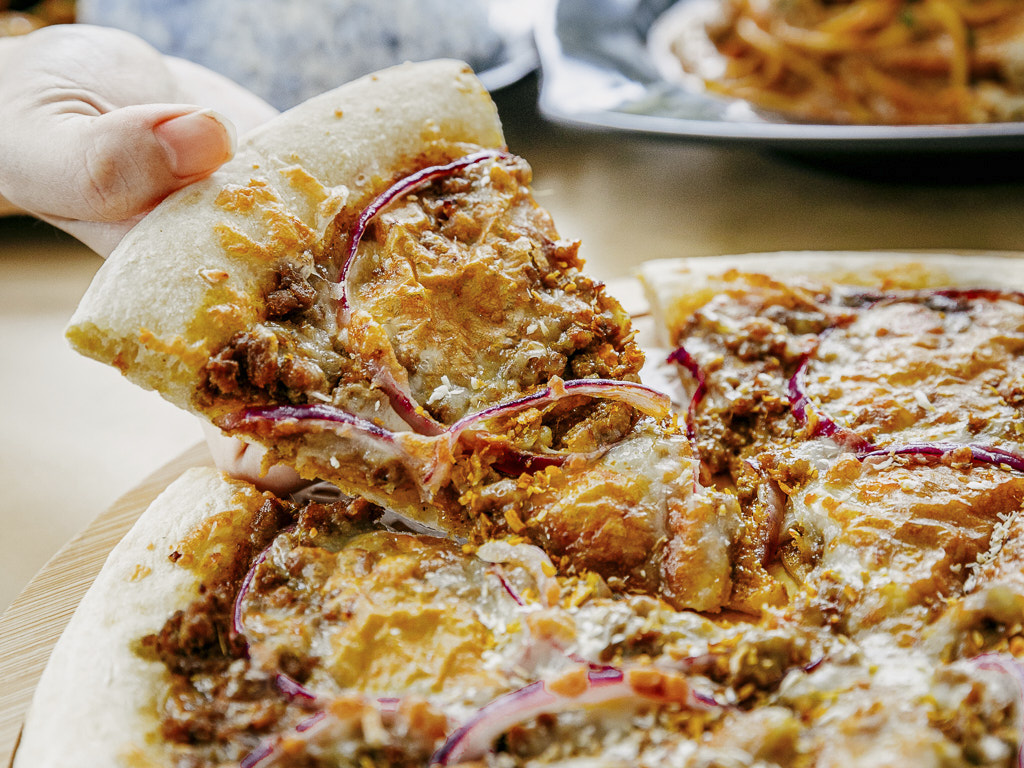
We found the pizza crust to be fresh and crispy. The beef rendang topping was a tad spicy for me, due to a low spice tolerance, but it did go well with the pizza dough and had that rich, aromatic kick. All-in-all, a crowd-pleasing dish worth trying and sharing with friends.
The last dish we tried was one from Panginut’s new sister stall Copra, which occupies the unit just beside it. Copra is Jarrod’s take on Peranakan-style nasi lemak, with blue pea flowers infused into the nasi lemak rice.
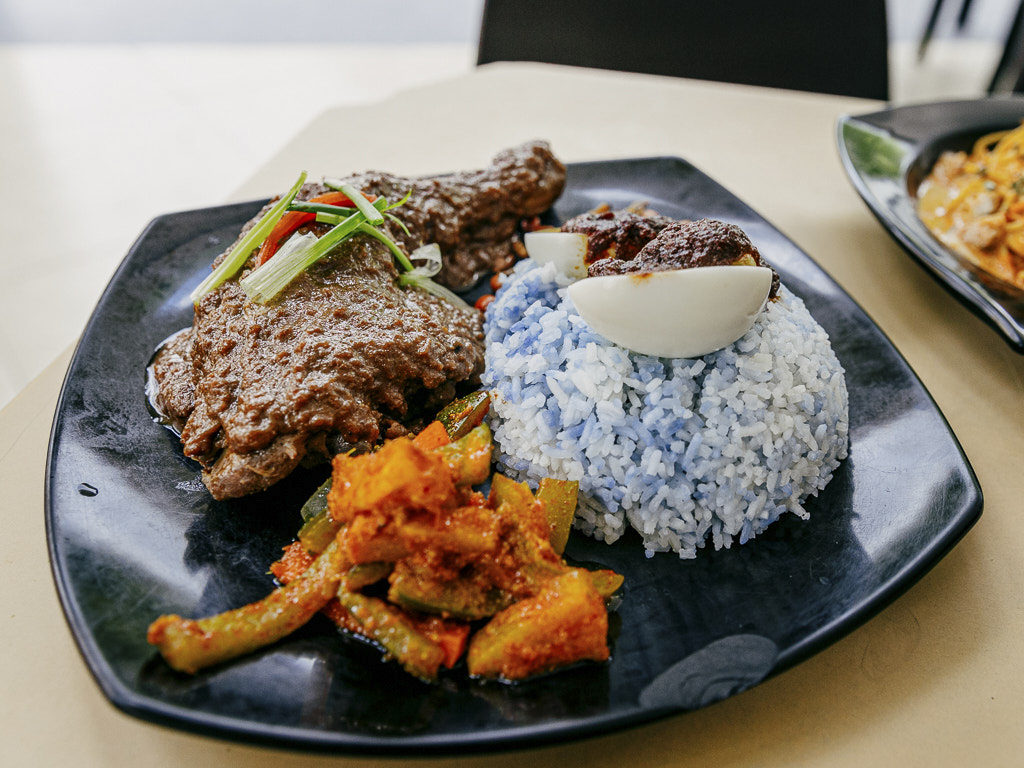
We tried the ayam sio (nyonya style-chicken with tamarind and coriander) nasi lemak — I was very impressed. The ayam sio sauce was a great combination of savoury and sweet. Assam (tamarind) is used to cook the ayam sio, so it’s non-spicy!
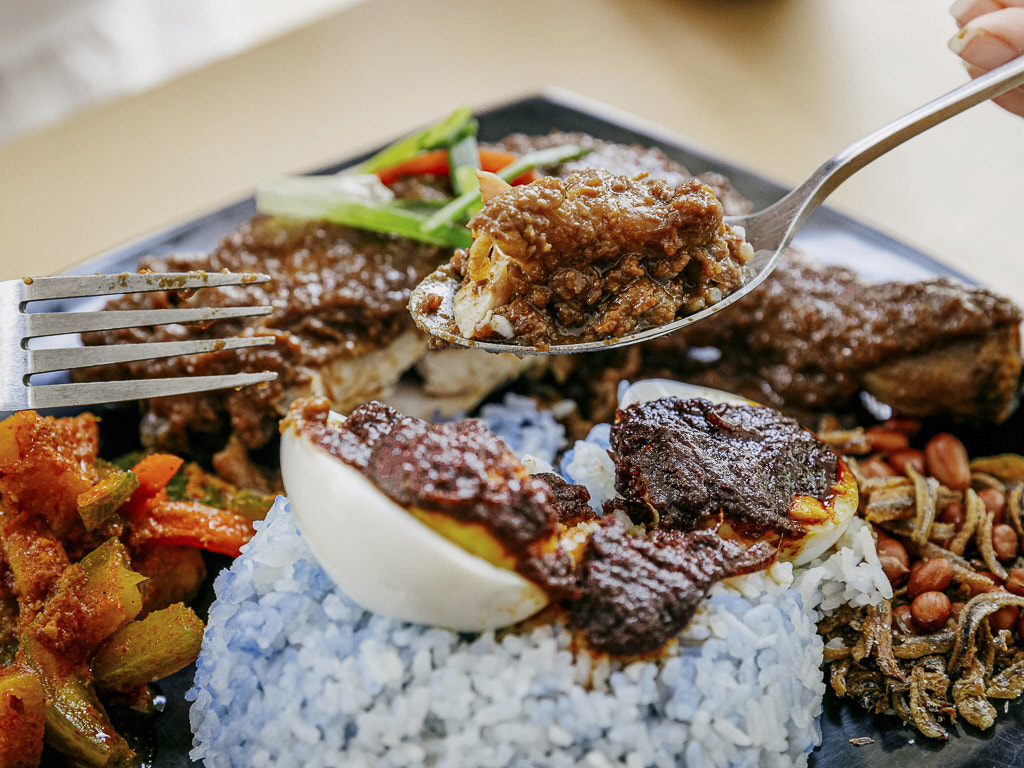
In addition to the delicious sauce, the chicken leg was very tender and juicy. I loved the “lemak” blue pea rice too — the pretty blues were a nice pop of colour on a dish full of ruddy reds and browns.
Jarrod started Copra in October as a contrast to Panginut’s large, fusion menu. It features a smaller, Asian-influenced menu, with blue pea nasi lemak rice as the main highlight. Different sets such as nasi lemak with fish tempura (S$9.50), chicken curry (S$8.50), beef rendang (S$9.50) and fish otah (S$6.50) are on offer.
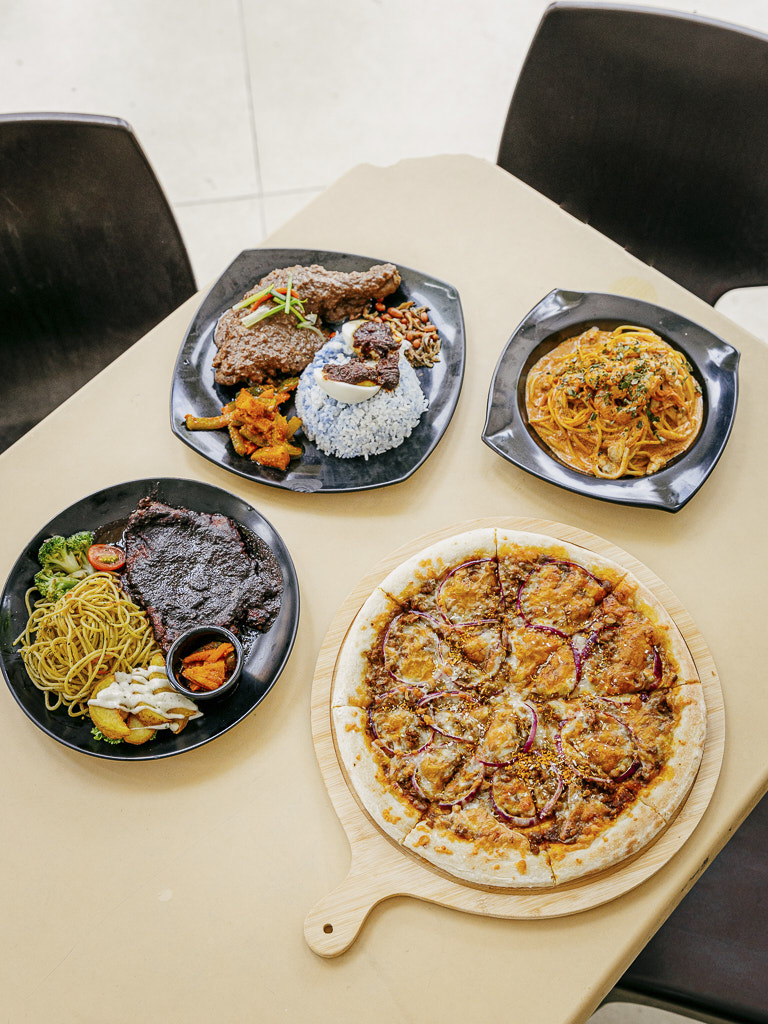
All-in-all, Panginut and Copra are solid additions to the local hawker scene. Panginut cleverly incorporates Peranakan flavours into western fare, without overwhelming each dish. As for Copra, the eye-catching blue pea nasi lemak rice will certainly be a crowd-favourite, thanks to its rich flavours and pairing of well-cooked meats such as the ayam sio.
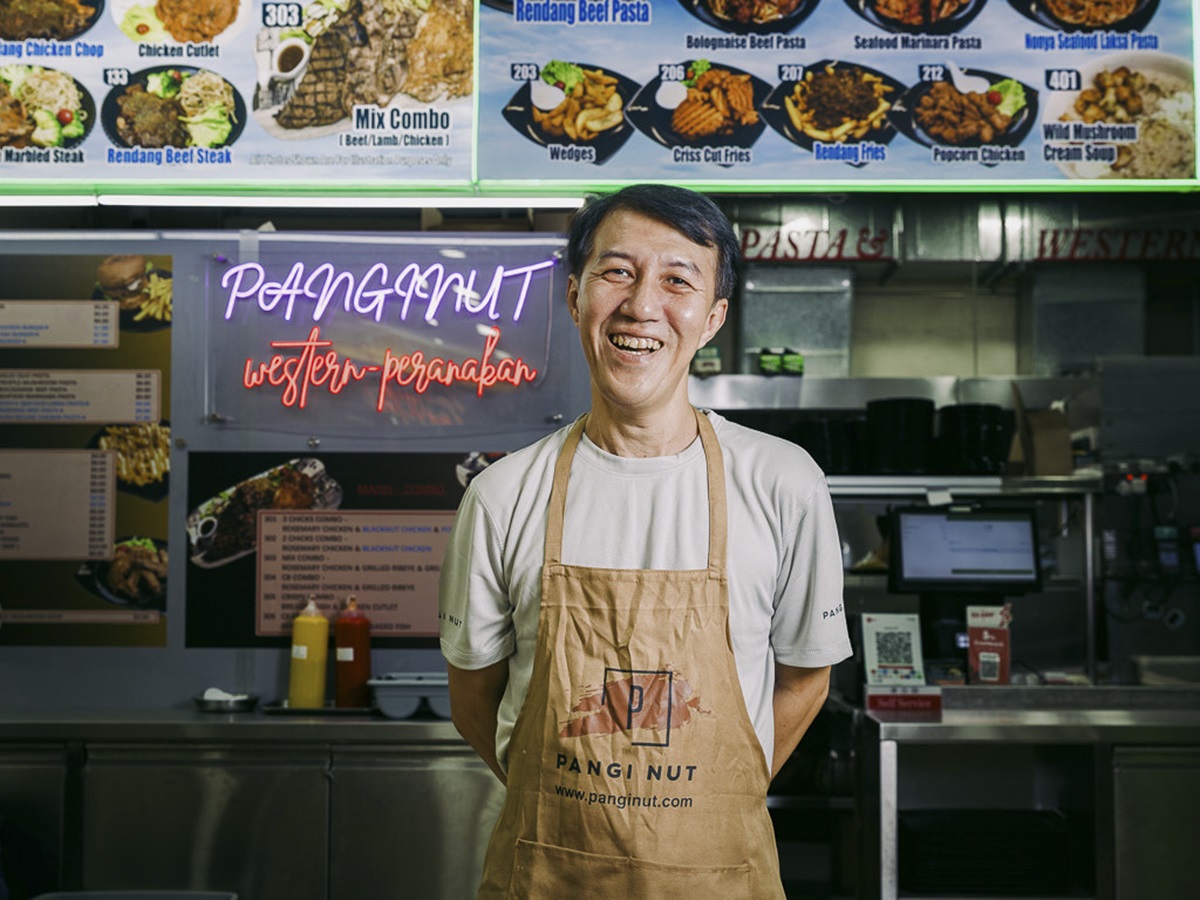
Jarrod’s passion for his own heritage and desire to educate others through his cuisine is also worth commending.
“Having authentic food is one thing, but getting the new generation to embrace such food is important too,” Jarrod says. “I hope that food at Panginut sparks an interesting conversation around Peranakan cuisine and culture, thereby preserving our heritage.”
For the latest eats, read about Irvin’s and Wingstop’s upcoming salted egg fried chicken collab. Alternatively, check out the newest openings in Singapore here.
Enjoy up to 50% off when you dine with GrabFood Dine Out.
You can also book a ride to Panginut and Copra at Joo Chiat to try its Peranakan-influenced dishes.
Panginut and Copra
Chew N Chat food court at Joo Chiat Complex, 01-1127, Stalls 15 & 16, 2 Joo Chiat Road
Nearest MRT station: Eunos
Open: Mondays to Sundays (8:30am to 9:30pm)
Chew N Chat food court at Joo Chiat Complex, 01-1127, Stalls 15 & 16, 2 Joo Chiat Road
Nearest MRT station: Eunos
Open: Mondays to Sundays (8:30am to 9:30pm)
